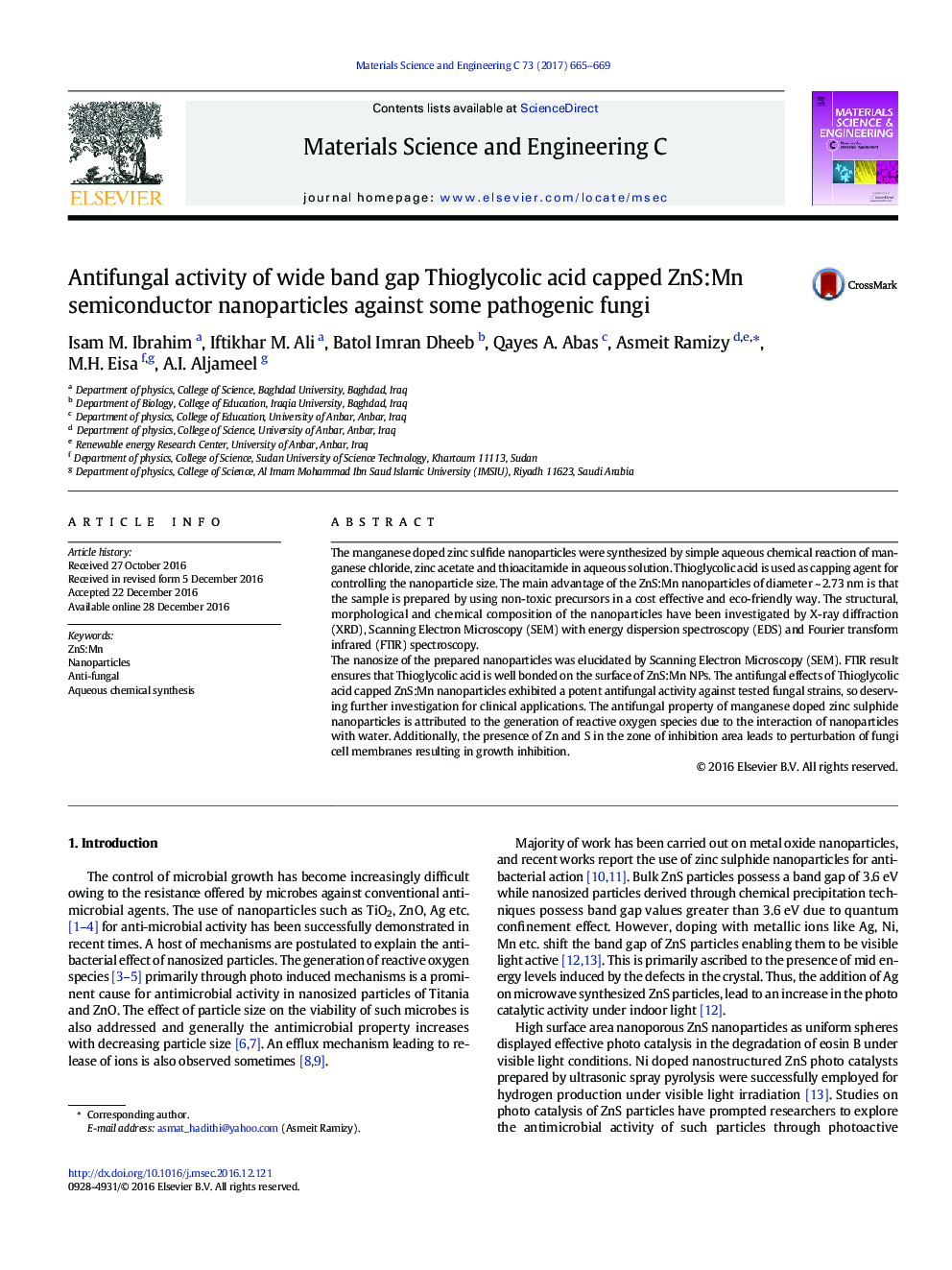| Article ID | Journal | Published Year | Pages | File Type |
|---|---|---|---|---|
| 5434973 | Materials Science and Engineering: C | 2017 | 5 Pages |
â¢The manganese doped zinc sulfide nanoparticles were synthesized.â¢Thioglycolic acid is used as capping agent for controlling the nanoparticle size.â¢The structural, morphological and chemical composition of the nanoparticles has been investigated.â¢The presence of Zn and S in the zone of inhibition area leads to perturbation of fungi cell membranes.
The manganese doped zinc sulfide nanoparticles were synthesized by simple aqueous chemical reaction of manganese chloride, zinc acetate and thioacitamide in aqueous solution. Thioglycolic acid is used as capping agent for controlling the nanoparticle size. The main advantage of the ZnS:Mn nanoparticles of diameter ~Â 2.73Â nm is that the sample is prepared by using non-toxic precursors in a cost effective and eco-friendly way. The structural, morphological and chemical composition of the nanoparticles have been investigated by X-ray diffraction (XRD), Scanning Electron Microscopy (SEM) with energy dispersion spectroscopy (EDS) and Fourier transform infrared (FTIR) spectroscopy.The nanosize of the prepared nanoparticles was elucidated by Scanning Electron Microscopy (SEM). FTIR result ensures that Thioglycolic acid is well bonded on the surface of ZnS:Mn NPs. The antifungal effects of Thioglycolic acid capped ZnS:Mn nanoparticles exhibited a potent antifungal activity against tested fungal strains, so deserving further investigation for clinical applications. The antifungal property of manganese doped zinc sulphide nanoparticles is attributed to the generation of reactive oxygen species due to the interaction of nanoparticles with water. Additionally, the presence of Zn and S in the zone of inhibition area leads to perturbation of fungi cell membranes resulting in growth inhibition.
